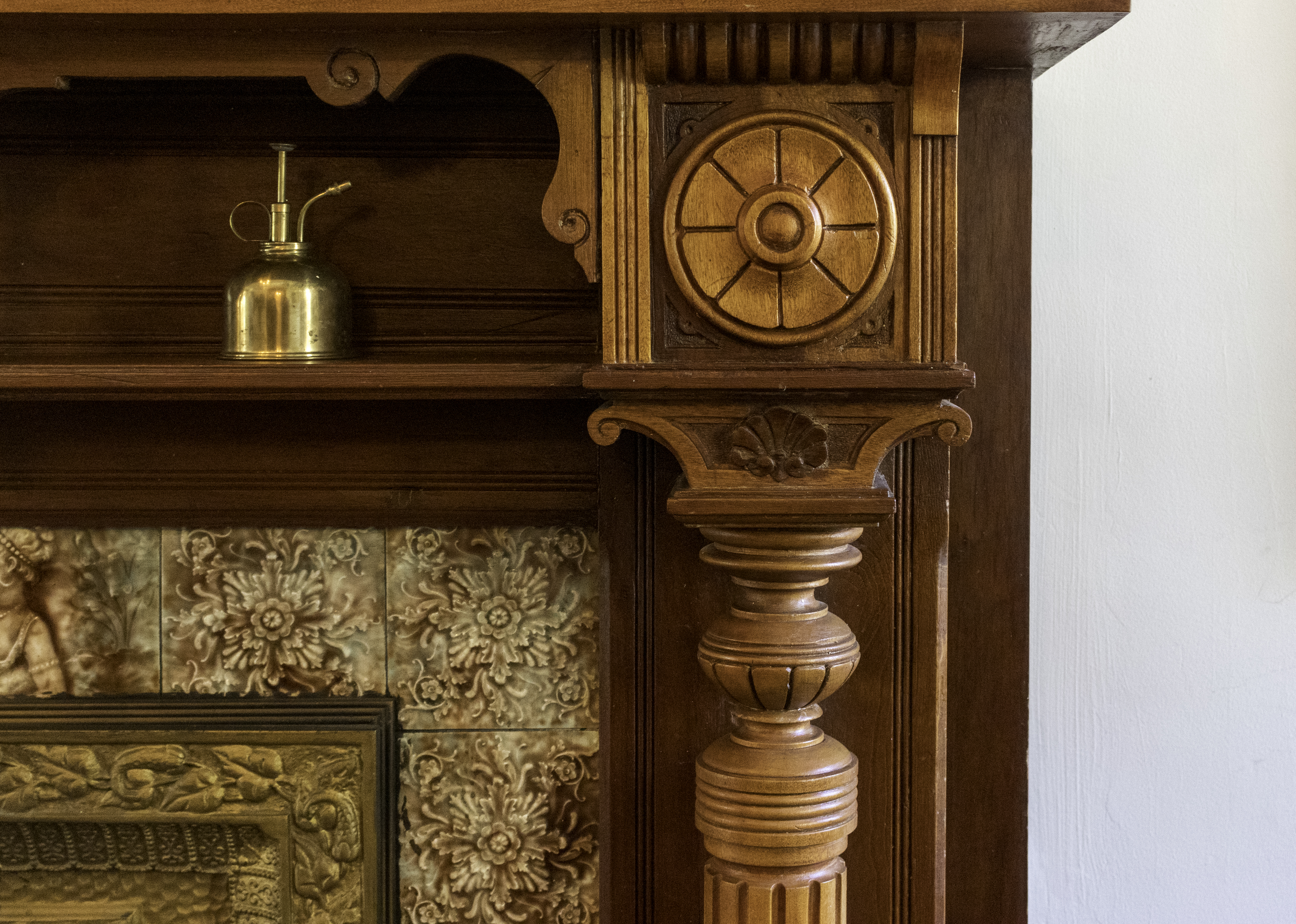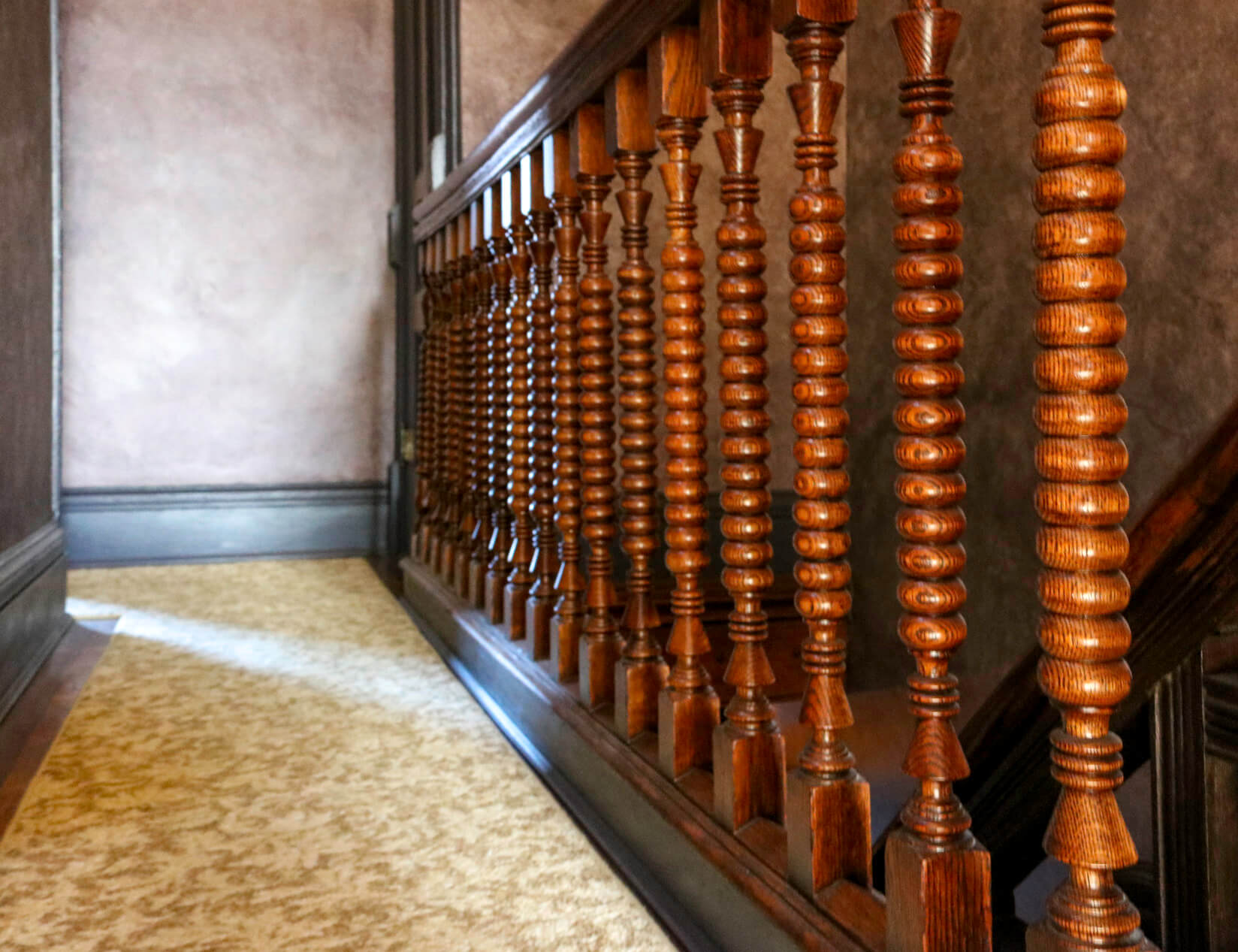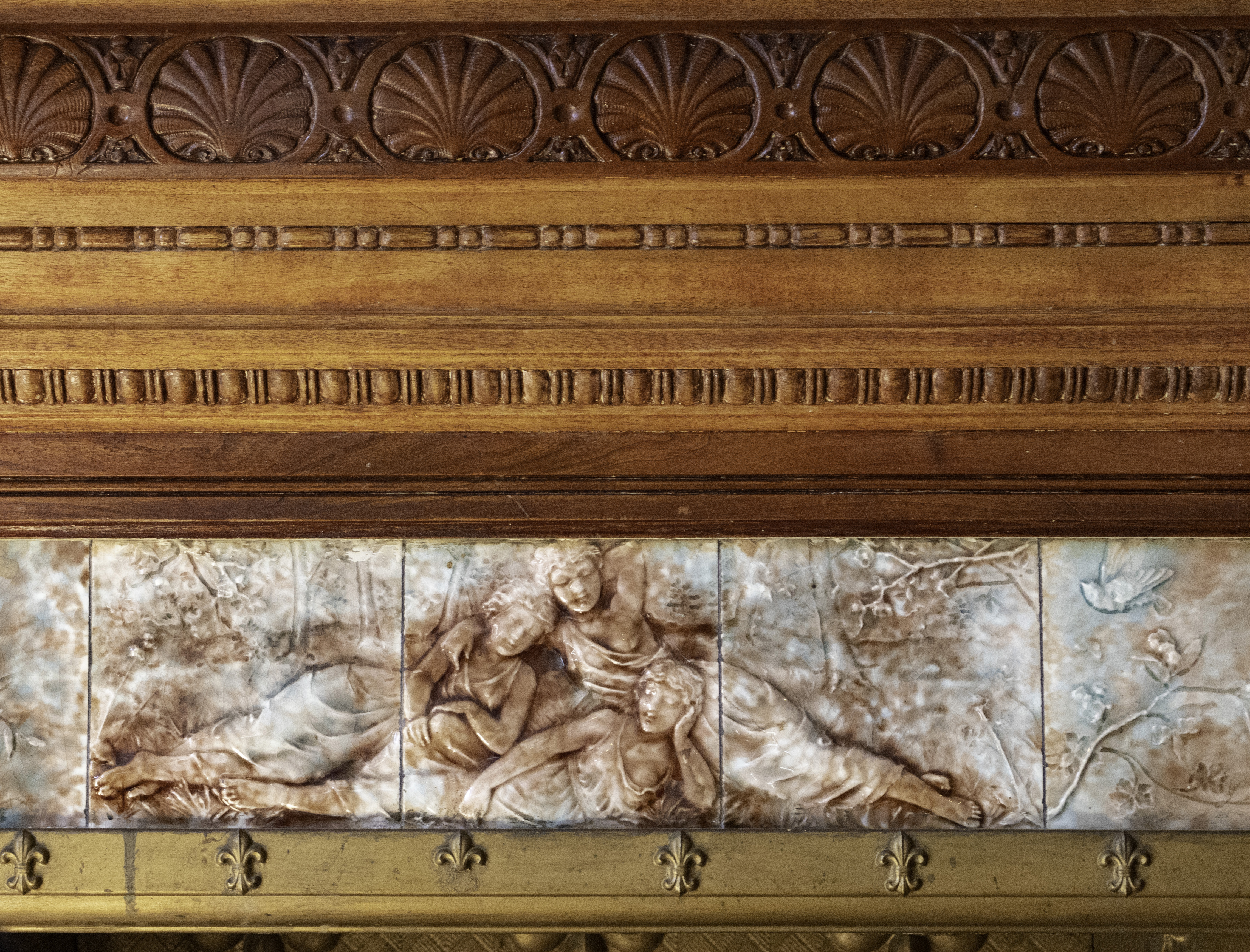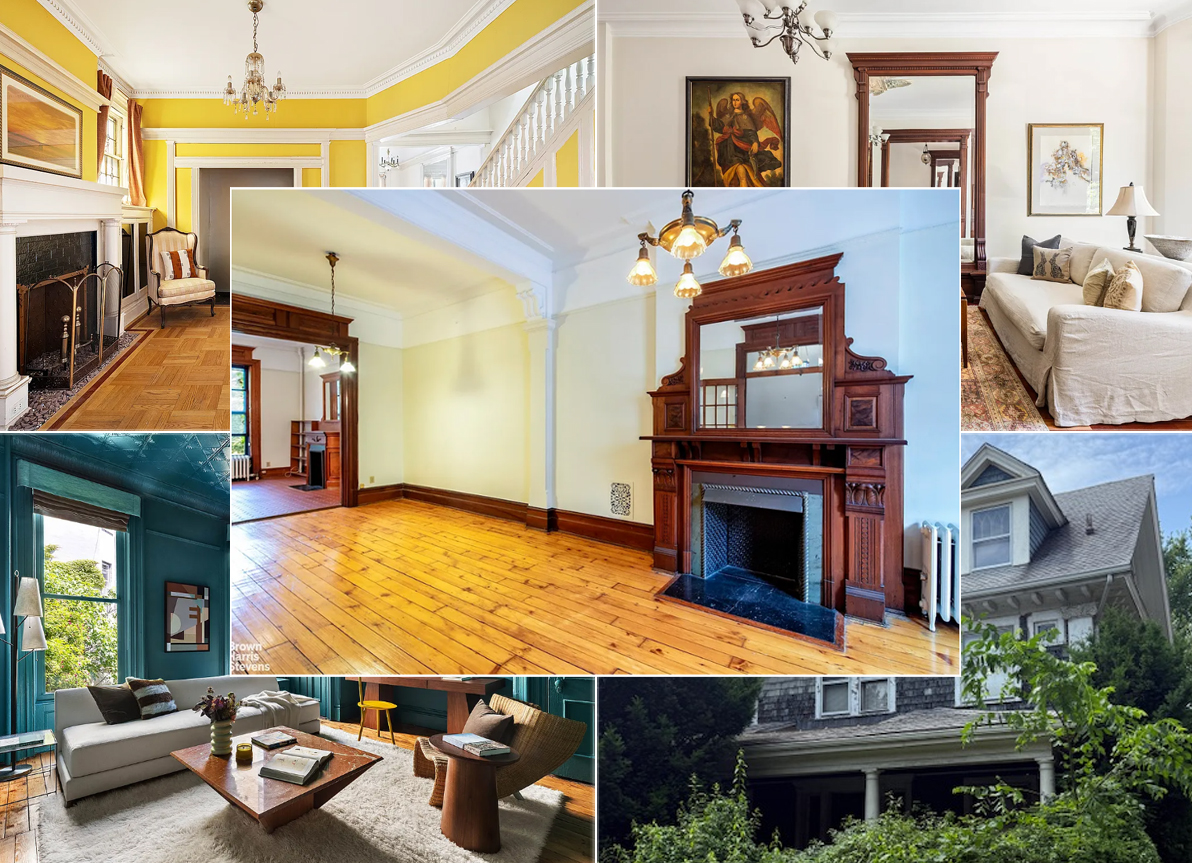Woodwork Restoration Secrets Revealed: How to Get That Nineteenth Century Glow
The vogue for natural woodwork with a clear finish peaked in the late Victorian era and has enjoyed many revivals since.

Photo by Susan De Vries
Perhaps you live in an historic house with perfectly intact, never-painted wood. You can just leave it be, or gently clean it with a rag dipped into water with a squirt of Ivory liquid soap.
How to refinish wood that has been stripped? Shellac is one of the most authentic, easy to work with and rewarding options.
“It is a very beautiful finish,” said Bed Stuy resident Daniel Thompson, who has been painstakingly stripping and refinishing what turned out to be exquisite burl veneers hidden under paint in his 1880s home over many years, one room at a time. The shellac saturates the wood, fills the grain and refracts light. “It makes any rich or patterned or figured wood — like bird’s-eye maple, burled walnut or mahogany — come to life,” he said. “It gives a three-dimensional effect like you can almost put your hand into it.”

The vogue for natural woodwork with a clear finish peaked in late Victorian houses from about 1870 to 1895 and has enjoyed many revivals since. At its height, “critics generally recommended staining hardwood trim in some natural color and painting softwood to correspond with the overall color scheme of the room,” Roger Moss and Gail Caskey Winkler wrote in “Victorian Interior Decoration.”
In expensive and fashionable homes, the best woods would be displayed on the parlor floor, with painted poplar relegated to upper bedroom floors. In more ordinary homes, the wood on the parlor floor would be poplar stained to resemble mahogany while, particularly in the 1890s, dining room woodwork on the garden level might be semi-transparently faux grained to resemble oak. Kitchens and baths during this period often mixed wood tones, with dish cupboards and moldings finished in a medium tone resembling aged pine or oak, while fir beadboard was stained dark walnut.
Wood finishing options include varnishes, waxes and penetrating oils such as tung oil. The latter soaks into the wood, producing a very natural looking matte or satin finish that is closer to the wood than shellac. “The character of the wood seems to come through the finish more with tung oil than the others,” said a Bed Stuy homeowner who used it throughout her 1890s brownstone after first stripping all the woodwork. To apply, rub on and wipe off, allowing to dry between coats.

Shellac is a natural resin produced by lac bugs. It comes in a range of colors from clear to garnet. You can buy fresh shellac premixed in denatured alcohol or buy it in flake form and mix it yourself with denatured or 180 proof grain alcohol (a slightly less toxic option).
Because shellac dissolves in water and alcohol, it is not ideal for use around sinks and tubs, but it is easy to apply and touch up. Open the windows and run a fan, but you do not need to wear a ventilator, and it dries very quickly.
Prepare the wood with a light sanding if the grain has been raised during stripping, remove any fingerprints with alcohol, and vacuum or clean with a tack cloth.

First test the shellac in an inconspicuous corner such as inside a door. Apply in quick, long strokes with the grain of the wood using a clean cotton cloth such as an old cut-up t-shirt, blending edges and smoothing brushstrokes.
A variety of methods can be used with good results. French polish, a traditional furniture finish, is very glossy and consists of many layers applied with oil and burnished between coats with volcanic pumice and sealed with Carnauba wax.
Another, more simple method is to apply one coat, let dry for about an hour, then buff it with extra fine steel wool. Repeat this process three to five times, until you are satisfied with the finish. If the result is too shiny, you can use fine steel wool to impart a satin finish. The final layer can be left as is or sealed with wax, varnish or a thin layer of satin finish polyurethane.
[Photos by Susan De Vries]
Editor’s note: A version of this story appeared in the Fall/Holiday 2019/20 issue of Brownstoner magazine.
Related Stories
- Brownstone Bible Redux: Charles Lockwood’s Seminal New York Row House Book Gets an Update
- Lighting in the 19th Century Row House
- 10 Tips for Restoring a Wood Frame House in Brooklyn
Email tips@brownstoner.com with further comments, questions or tips. Follow Brownstoner on Twitter and Instagram, and like us on Facebook.





What's Your Take? Leave a Comment